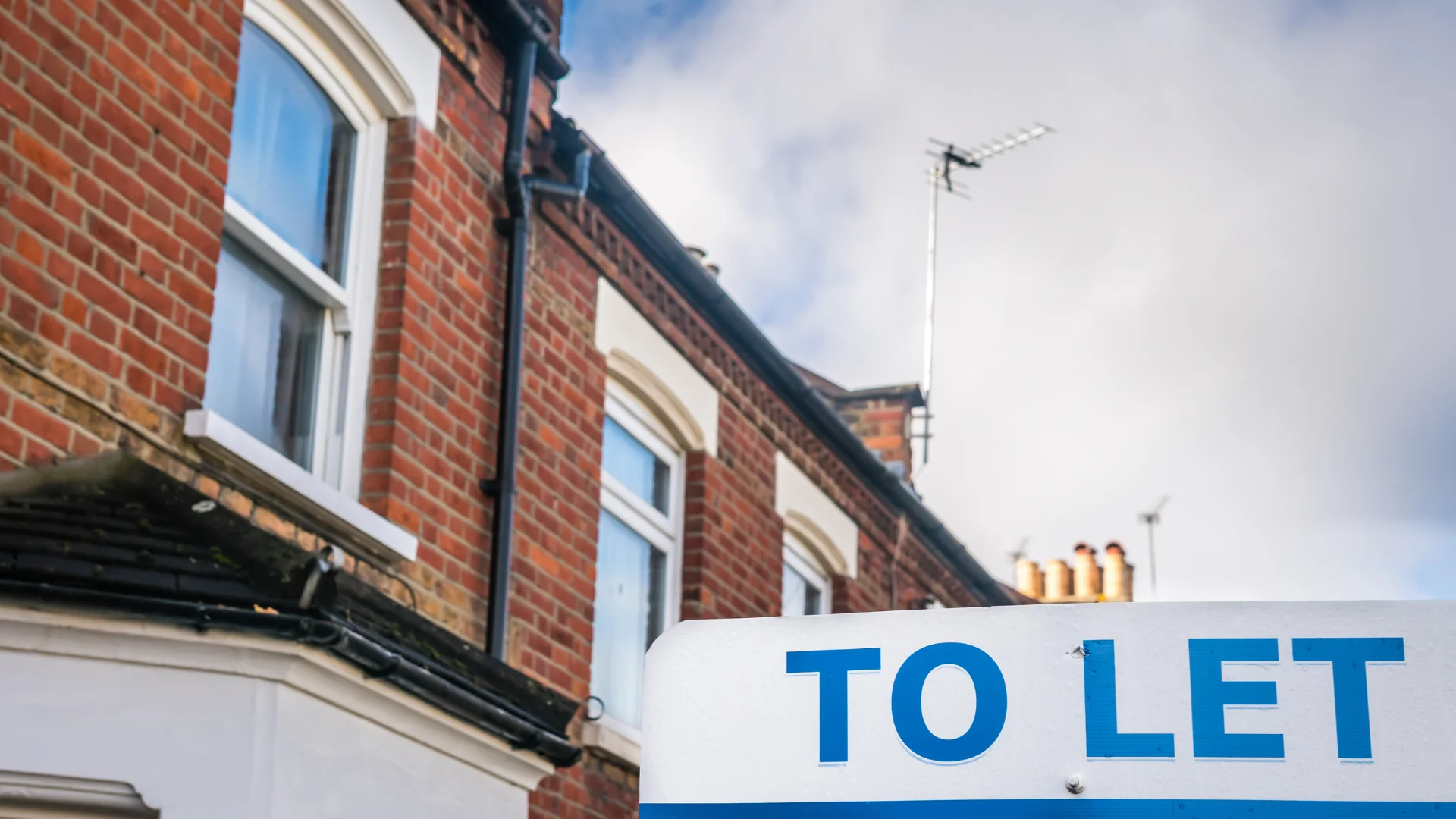- What Is an Interest-Only Buy-To-Let Mortgage?
- Are All Buy-to-Let Mortgages Interest Only?
- Why Landlordsâ Choose An Interest-Only Buy-To-Let Mortgage
- What Are the Risks and Considerations?
- Who Can Get an Interest-Only Buy-to-Let Mortgage?
- How Much Can You Borrow with an Interest Only Buy to Let Mortgage?
- Interest Rates and Charges: What to Expect
- What Are Different Ways To Repay an Interest-Only Mortgage?
- Key Takeaways
- The Bottom Line
Interest Only Buy-To-Let Mortgages Explained

Are you considering buy-to-let mortgages in the UK?
You’ve probably heard of interest-only buy-to-let mortgages. Thousands of landlords choose this method to save more money on monthly payments.
Curious why?
This guide unpacks what they are and why they’re popular with buy-to-let investors. We’ve covered the nitty-gritty to help you decide if this is the right choice for you.
What Is an Interest-Only Buy-To-Let Mortgage?
An interest-only buy-to-let mortgage is a mortgage for investment properties where you just pay the interest each month.
The actual amount you borrowed, called the capital, isn’t paid back monthly. Instead, you pay it all back in one lump sum at the end of the mortgage term. This usually means selling the property you bought.
With interest-only, your payments are smaller because they only cover the interest. This frees up cash for you, like if you want to buy more properties, fund for home improvements, insurance costs, or letting agent fees.
The catch is, that you need a plan to repay the entire loan at the end, typically by selling the property. There might be other options depending on your situation, but that’s the main idea.
Are All Buy-to-Let Mortgages Interest Only?
Not all buy-to-let mortgages are interest-only.
You have two main choices: interest-only or repayment mortgages.
As we’ve discussed, an interest-only mortgage lets you pay for just the monthly–interest of the loan.
On the other hand, a repayment mortgage includes both interest and part of the loan itself. This means your monthly payments are higher, but you’re gradually owning more of the property over time.
The best choice depends on your financial goals and situation.
If you’re unsure, speaking to a buy-to-let mortgage advisor can help you make the right decision for your investment.
Why Landlords’ Choose An Interest-Only Buy-To-Let Mortgage
Apart from lower monthly payments, there are other reasons many landlords opt for interest-only mortgages for buy-to-let.
Here’s a look at some of the reasons:
More Freedom To Invest
The money you save on payments can be used for other things. You could fix up your property, save for a rainy day, or even buy more properties to grow your business.
No Strict Income Checks
What’s great about these mortgages is that lenders might not be too strict about your personal income. They’re more interested in the rental income the property could bring in.
Usually, if your rental income is about 125% more than your mortgage payments, you’re in a good spot. This makes it much easier for you to get started, especially if you’re worried your personal income might not be enough.
It’s a real help for anyone concerned about passing the usual income checks, giving you a smoother start in buy-to-let mortgages.
Simpler to Switch
Interest-only mortgages often have more relaxed requirements when it’s time to remortgage for a better interest rate. This is compared to repayment mortgages.
Typically, you’ll need to remortgage after your initial fixed-rate deal ends (usually 2, 3, or 5 years). If you don’t remortgage, you might end up on the lender’s Standard Variable Rate (SVR), which can be expensive.
With this type of mortgage, you can enjoy lower payments and a simple remortgage process as you’re not tied to the principal loan.

Profit from Property Value Increases
If your property goes up in value, you could make a good profit when you sell, especially since you’ve only been paying the interest.
For example, let’s say you’ve bought a flat for £100,000 with an interest-only mortgage. The fixed interest rate is 5%, so your monthly payment is £416.67 (much lower than a regular mortgage).
20 years later, if property prices rise, the flat could be worth £150,000. You sell it to repay the £100,000 loan and keep the difference (£50,000 profit).
This profit is bigger than the interest you paid over the years. That’s the benefit of rising property prices.
Note though that this is an ideal scenario and property prices don’t always rise. There’s a chance they could fall, leaving you with less money to repay the loan when you sell.
Higher Rental Income
With lower payments, you might get more profit from the rent you charge. This is great if you’re looking to earn a steady income from your property.
What Are the Risks and Considerations?
While interest-only mortgages offer several benefits, there are also risks and considerations that you need to be aware of:
Not Owning Your Property Outright
A big risk is that at the end of your mortgage term, you don’t fully own the property. You’ve only been paying the interest, so you’ll need a plan to pay back the whole loan or remortgage it.
Paying More Interest
Over time, you might pay more interest than with a repayment mortgage.
Since you’re not chipping away at the loan itself, the interest adds up because it’s calculated on the total loan amount throughout the mortgage term.
Dealing with Market Changes
Property values can go up and down.
If they fall, you might end up owing more than what your property is worth. This can make it tricky to pay back the loan at the end of the mortgage term.
Having an Exit Strategy
It’s key to have a clear plan for paying back the loan when the mortgage term ends.
Whether you plan to sell the property or remortgage, make sure your plan is solid and fits your long-term goals.
Who Can Get an Interest-Only Buy-to-Let Mortgage?
When you’re considering an interest-only buy-to-let mortgage, understanding the eligibility criteria is crucial. Here’s a straightforward look at what lenders typically look for:
- Rental Income – Your property’s rental income should cover the mortgage interest, usually between 125% to 145% of what you’ll pay each month.
- Landlord Experience – Some lenders prefer it if you’ve been a landlord before. They think it means you’re good at keeping the rent coming in regularly.
- How Much You Need Upfront – You’ll need to put down a bigger deposit than for a regular home loan, often about 25% of the property’s price. But this might change based on the kind of property you’re buying.
- Your Financial History – Lenders will have a good look at your money situation. They’ll check if you have other loans and how well you manage your money to make sure you can handle the mortgage.
How Much Can You Borrow with an Interest Only Buy to Let Mortgage?
The amount you can borrow depends on two main things: the rent you expect to charge and the property’s value.
Lenders will want to be sure the rent comfortably covers your monthly interest payments. They’ll often get a professional valuation of the property to make sure the price is fair and the rent matches.
To get a rough idea of how much you might borrow, you can use the calculato.
Note: Different lenders offer different deals, so it’s worth shopping around to find the best one for you.
Interest Rates and Charges: What to Expect
Interest rates on buy-to-let mortgages can differ quite a bit. They might be different from rates on regular mortgages, especially for interest-only deals.
There are also extra charges to consider, like arrangement fees, valuation fees, and even early repayment penalties.
Consider consulting a mortgage broker to help you get the best deal. They can shop around with different lenders to find a mortgage with a competitive interest rate, along with lower fees and terms that suit your situation.
While some brokers typically charge fees themselves, they can often save you money in the long run by finding the best overall package.
Sometimes, a slightly higher interest rate with lower fees can save you money in the long run.
What Are Different Ways To Repay an Interest-Only Mortgage?
When your interest-only mortgage ends, you’ll need to pay back the full loan amount. Here’s how most landlords handle it:
Selling the Property
If your property’s worth more now, selling it can be a smart move to pay off your mortgage and maybe make some extra cash.
To get the best price, you might want to fix up the place a bit. Sell when prices are high for the best deal. A good estate agent can help here too.
Remortgage
Remortgaging means you get a new loan to pay off the old one. Look around for the best deals and check your credit score to see where you stand.
Remember, there might be extra costs with a new mortgage, so make sure it’s worth it.
Using Savings or Investments
The simplest way to pay off your mortgage is with savings or investments you already have. Keep saving a bit of what you earn or from your rental income.
Choose investments that grow but can be turned into cash when you need it. Keep an eye on your investments and be ready to change your plan if you need to.
Key Takeaways
- Interest-only buy-to-let mortgages mean you only pay the interest each month, with the full loan amount due at the end of the term, usually by selling the property or remortgaging.
- These mortgages have lower monthly payments, which can free up cash for things like property improvements, buying more investments, or covering other expenses.
- Approval depends heavily on rental income—lenders want it to cover 125% to 145% of your monthly payments, so it works best for properties with strong rental potential.
- While you’ll have more flexibility with your money, you could end up paying more in total interest, and if property values drop, it might be harder to repay the loan.
- You’ll need a solid plan for the end of the term, like selling the property, remortgaging, or using your savings or investments to clear the balance.
- Expect to put down a larger deposit, usually around 25% of the property’s value, though lenders are often less strict about your personal income.
The Bottom Line
Landlords often choose interest-only buy-to-let mortgages to keep monthly payments lower. This frees up cash to manage your properties and investments.
Here’s the catch: You won’t be paying off the loan itself, only the interest. This means you’ll need a plan to repay the full amount later.
But before jumping in, get expert advice.
A buy-to-let mortgage advisor can help you understand the terms, create an exit strategy, and find the right mortgage for your situation.
If you think an interest-only mortgage might be a good fit, get in touch with us. We can connect you with a qualified broker who can guide you through the process.
Get Matched With Your Dream Mortgage Advisor...

Frequently asked questions
Can I remortgage from a repayment mortgage to an interest-only mortgage?
Yes, you can. Remortgaging is possible, but it depends on your lender’s terms and your financial situation. You’ll likely need to go through a new application process.
First, you need to have a chat with your current lender about their policies for making the switch. They might have specific offers or require additional equity in your property.
If the terms aren’t favourable, you might need to look at other lenders. Remember, remortgaging could involve early repayment fees or exit fees from your current mortgage.
Be prepared to discuss why you want to change to an interest-only mortgage and ensure you have a solid plan for repaying the loan later.
Can first-time landlords get an interest-only mortgage?
Yes, but it might be a bit harder. Lenders often see first-time landlords as higher risk, so they might ask for a bigger deposit or proof that the rental income will cover the mortgage payments. Some lenders specialise in loans for first-time landlords, so it’s worth shopping around.
How do I apply for an interest-only buy-to-let mortgage?
First, make sure you fit the lender’s criteria, especially regarding rental income and your deposit. Gather all your financial details, like income, savings, and any other debts.
Then, you can apply directly to a lender or use a mortgage broker who can help find the best deal for you and guide you through the application process.




